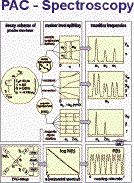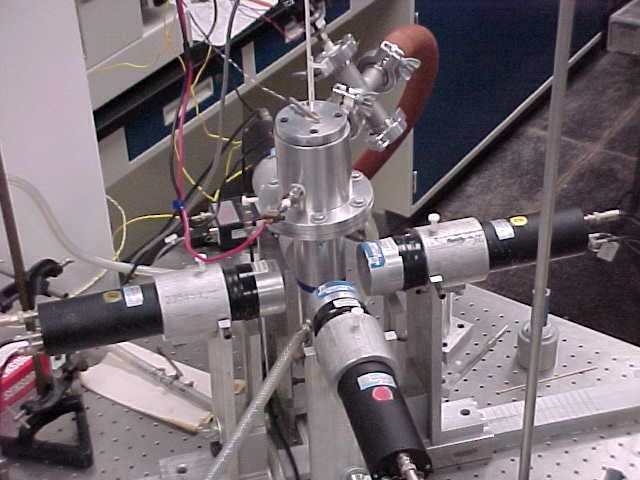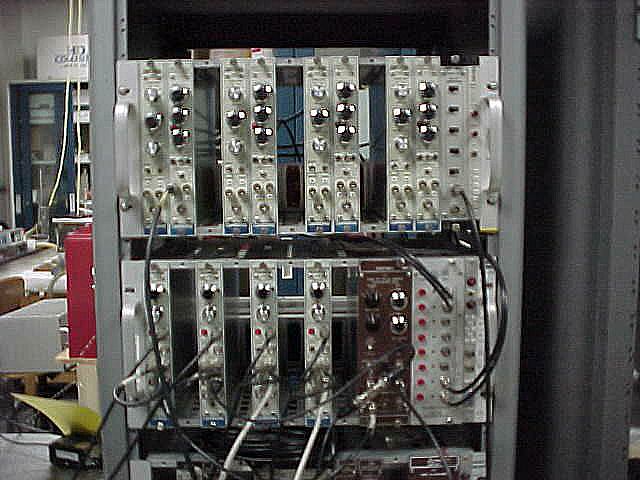 |
My primary research interest is materials physics, in
particular, the physics of ceramic materials. Ceramics belong
to a huge class of materials including a multitude of
compounds, many of which have technologically important
applications such as thermal barrier coating, oxygen sensors,
ferroelectric memory chips, and high transition temperature
superconductor devices.
[Top]
I use time-differential perturbed angular correlation spectroscopy
(PAC) to
study structure and defects in ceramic materials on a
microscopic level. PAC is a hyperfine interaction method and uses a
nuclear probe to measures its interaction with electric and magnetic fields
due to surrounding charges and spins. This technique allows the characterization
of crystalline order, the study of local defect structures, as
well as the investigation of structural and dynamic processes,
such as phase transitions, the nature of defects, vacancy
migration, etc. Details on PAC can be found here.
[Top]
Presently, ongoing work includes the following:
 The electric field gradient in crystalline zircon (ZrSiO4)
The electric field gradient in crystalline zircon (ZrSiO4)
 Radiation damage in naturally occurring zircons
Radiation damage in naturally occurring zircons
 Rare earth titanate and zirconate pyrochlores
Rare earth titanate and zirconate pyrochlores
[Top]
Time-Differential Perturbed Angular Correlation Spectroscopy (TDPAC, or short PAC) is a nuclear probe technique that is sensititve to the interaction of radioactive probe nuclei with electric and magnetic fields due to surrounding charges and spins. The probe nucleus decays from an excited state to the ground state via subsequent emission of two -photons, 1 and 2. Since -photons are emitted preferentially along the nuclear spin direction, detection of 1 by a fixed detector selects an ensemble of nuclei with spins oriented along the detector axis. Subsequent emission of 2 from this set of oriented nuclei is now anisotropic and is referred to as the (unperturbed) angular correlation of 2 with respect to the direction of 1. This angular correlation depends on the nuclear spins of the involved states of the probe nucleus and the multipolarity of the emitted -photons, as well as the angle between the direction of emission of 1 and 2.
If a hyperfine field is present, the degeneracy of the nuclear sub-states (m-states) is lifted, and the initial population of the intermediate sub-states changes between the emission of 1 and 2. Semi-classically this interaction can be visualized as precession of the nuclear spin in the extra-nuclear hyperfine field. This spin precession perturbs the angular correlation and results in an oscillation of the delayed coincidence rate of 2 with respect to 1. The precession frequency is characteristic for the type of interaction and its strength.
[to be continued]
[Top]
 |
PAC poster of the Konstanz group (click image for larger view) |
[Top]

Detectors and sample furnace of the Miami University PAC spectrometer.
[Top]

PAC spectrometer electronics.
Top row: linear amplifiers, single channel analyzers, delay.
Bottom row: constant fraction discriminators, TAC, routing.
[Top]
Descriptions of PAC spectroscopy on other servers
[Top]
|
